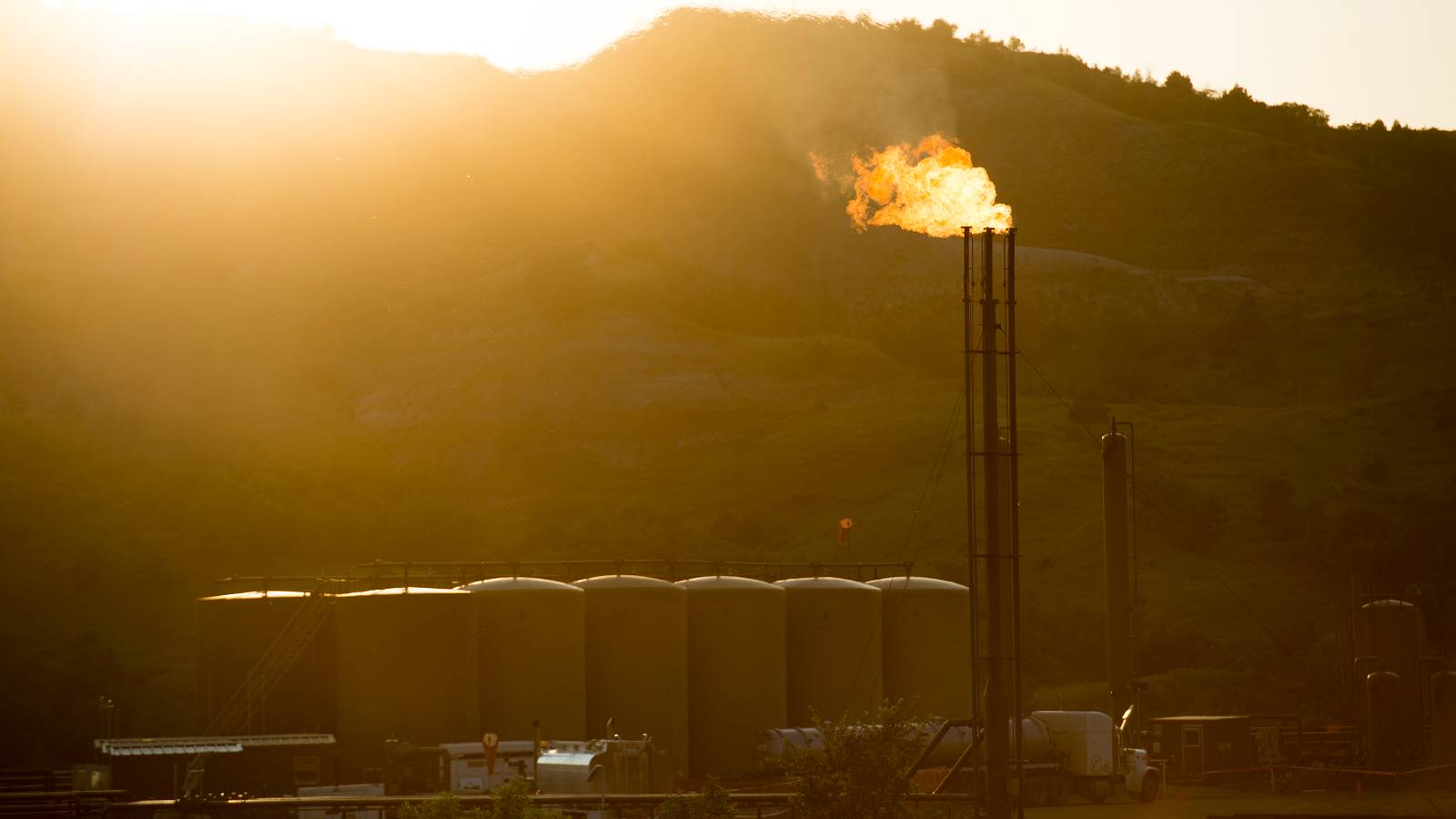The Bureau of Land Management proposed a new rule Monday that aims to reduce wasted natural gas on federal and Tribal lands which will help tamp down methane releases. By preventing billions of cubic feet of natural gas emissions that come from unintentional equipment leaks or deliberate venting and flaring, the federal government hopes to curb the potent greenhouse gas which is responsible for 30 percent of global warming.
The proposed rule, said Secretary Deb Haaland in a press release, “will bring our regulations in line with technological advances that industry has made in the decades since the BLM’s rules were first put in place, while providing a fair return to taxpayers.”
The rules would require operators to submit a waste minimization plan with any permit application to drill oil wells. If a plan doesn’t adequately show how the operator will avoid wasting gas, the BLM can delay approval until the concerns are addressed to the agency’s satisfaction.
There would also be monthly limits on flaring, mandatory technology upgrades, and enforced leak and detection programs. The proposed rule would apply solely to oil and gas facilities that the BLM oversees on federal and Tribal land.
Roughly 8 percent of the United State’s natural gas supply and 9 percent of its oil supply come from federal and Tribal lands. Between 2010 and 2020, oil and gas producers on federal and Tribal lands lost approximately 44.2 billion cubic feet of natural gas each year due to venting and flaring – burning natural gas at the well or releasing it directly into the atmosphere, respectively. Through the 1990s, 11 billion cubic feet of natural gas was lost each year.
“No one likes to waste natural resources from our public lands,” said BLM Director Tracy Stone-Manning in a press release. “This draft rule is a common-sense, environmentally responsible solution as we address the damage that wasted natural gas causes.”
The proposal builds on goals the Biden administration announced at 27th United Nations climate change conference, or COP27, as well as in November 2021 after COP26 where the U.S. became one of more than 100 countries to sign the Global Methane Pledge – a non-binding agreement to collectively reduce global methane emissions at least 30 percent from 2020 levels by 2030. According to a recent Global Carbon Project study, half of methane emissions are caused by humans – and fossil fuels represent nearly 18 percent of that total budget. Of that, roughly 63 percent is derived from oil and gas production and pipelines.
But federal proposals to curb methane emissions have been met with limited success. Environmentalists celebrated ambitious regulations the EPA introduced last year, but in 2016, a BLM attempt to reduce natural gas waste – an earlier version of this proposal – was quashed by industry and state groups, arguing that the EPA overstepped its authority.
All together, the federal government estimates that implementing the new rule would cost companies roughly $122 million per year to meet requirements but would benefit from $55 million worth of recovered gas per year. The BLM claims individuals living in the U.S. would benefit $427 million per year from avoiding climate damages with reduced greenhouse gas emissions.
In an email, BLM press secretary Brian Hires said “the proposed rule would ensure that, when federal or Tribal gas is wasted through excessive venting or flaring, the public and Tribal mineral owners are compensated through royalty payments.”
The National Congress of American Indians did not respond to a request for comment on the proposal.



